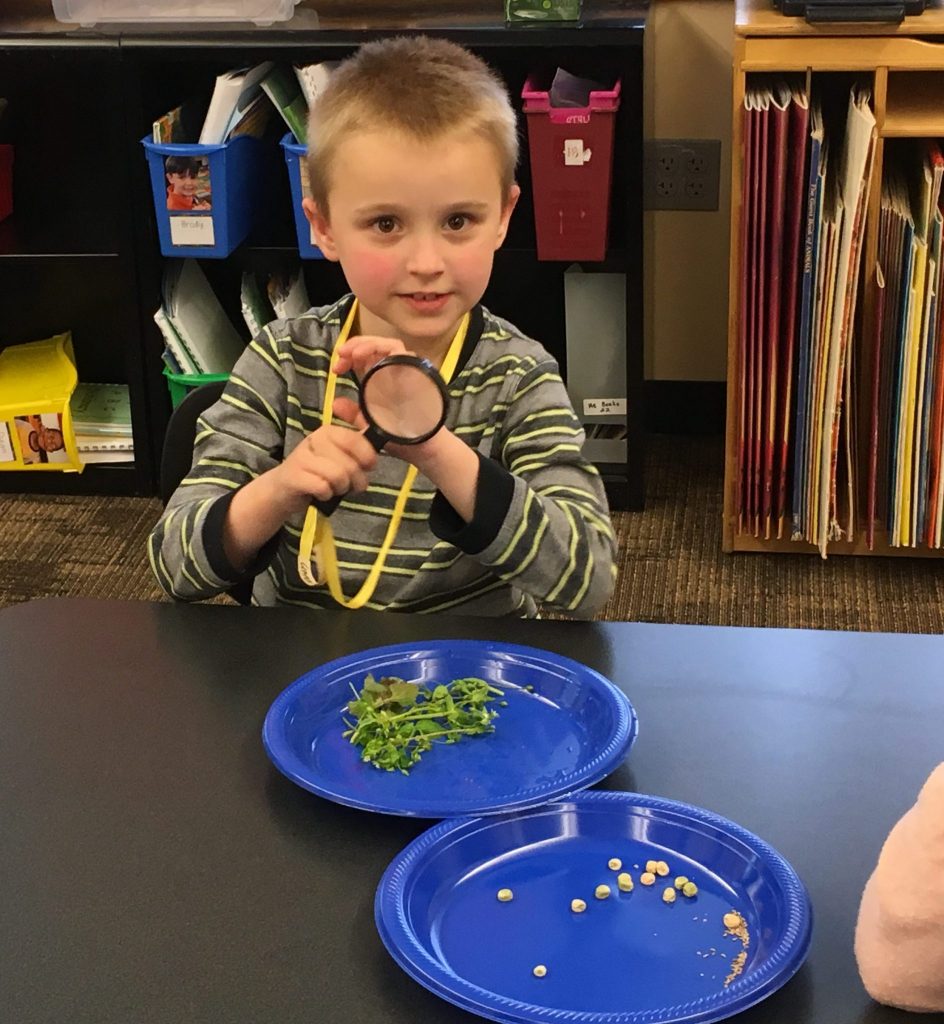Curious Minds and Dirty Hands
Have you ever wondered what happens during an elementary school garden lesson with Common Threads? AmeriCorps Food Educators share a sneak peek into our some of our lessons this spring. This is a multi-part series, stay tuned for future lessons!
The third spring lesson (by Lindsay Williams)
If you haven’t already, read about the first spring garden lesson and the second garden lesson!
School gardens are flourishing thanks to the combination of sunshine, rain, and care from students. Students have enjoyed observing and planting during the third lessons of springtime gardening classes!
Early grades explored comparisons in the garden, learning what is part of our garden ecosystem and why those things are important. Kindergarteners searched for living and nonliving things in our garden, using magnifying glasses to get a closer look. They found that objects such as rocks and sticks are important to living things because they can provide shelter for insects that help the garden. First graders spent their time finding helpful and not so helpful insects in the garden. They discovered many insects that help the garden by pollinating, decomposing, or acting as pest control. We also found some insects that we would rather not have in our garden, such as aphids. Everyone liked ladybugs even more after this lesson–not only are they beautiful, but they can keep the aphid population to a minimum in the garden!

Second graders observed their radishes and were astonished that they had sprouted so quickly! They noted changes in their garden journals and thinned the radishes so that the remaining plants would have enough space to grow. Third graders also observed pea seeds that they had planted earlier and found that they were sending out tendrils to support themselves. In addition to their observations, third graders enjoyed learning why leaves are green and harvesting chlorophyll through leaf rubbings. “I can see all the parts of the leaf!” one student exclaimed after she had finished. “This is how plants use the sun to grow!” said another.
Fourth graders mixed and matched plant parts to their functions on a whiteboard and tended gardens through watering and weeding. Thanks to their efforts, the seeds we planted have a better space to grow! Fifth graders got a chance to test out their theatrical skills with a skit to learn the process of photosynthesis. After their stellar performances, they went out to the garden to see photosynthesis in action, creating diagrams of the process and identifying similarities in leaves.

When students learn what it takes to support plants in their growth, their appreciation for food and the work of growing food deepens. We love these “aha!” moments that happen as we spend time in the garden. The garden can be such a fun, instructive classroom!
Wonder what kids will be doing next in the garden? Read about it in part 4 of the series.
